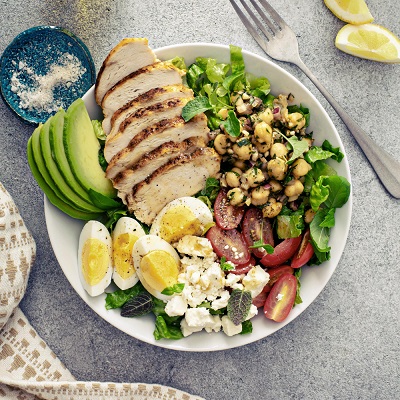 One of the hardest things about changing your diet is getting accustomed to a new way of eating. When you’re used to eating one way it’s very hard to think about eating a different way, especially when that different way means that you are trying recipes that you’ve never used before and eating foods that you’ve likely never had before.
One of the hardest things about changing your diet is getting accustomed to a new way of eating. When you’re used to eating one way it’s very hard to think about eating a different way, especially when that different way means that you are trying recipes that you’ve never used before and eating foods that you’ve likely never had before.
Thankfully following just a few simple rules when going whole can be a lifesaver on this journey.
And the great news is that you don’t need to limit yourself when going whole, when you find a food that is allowed on your new eating plan, you are able to eat that food with very little or no restriction. For many people this is a game changer, and it makes it very easy for them to adjust to their new way of living.
Finding just one or two whole friendly foods that they like can be enough to get them through that crucial 30 days.
Just like finding one or two foods is important, finding one or two meals that can become a staple to your everyday diet is also important. These meals should be simple, they should be filling, they should be something that you know you can eat without restriction.
The good news is that once you find one or two meals that you really like, you will be able to continue eating these meals long after your initial transition into whole food eating.
So what are you allowed to eat during your transition? Obviously everything you eat has to be good for you, but that doesn’t just means skipping the junk food or cutting out sugar. Sometimes even healthy food choices are not as healthy as we think, but are instead filled with chemicals that can be harmful to our bodies over time.
Because of this, it’s important to try to eat organic as much as humanly possible. This doesn’t just mean that your vegetables should be organic, it also means that your meat should be organic. The good news is that your local farms or local farmers markets should be able to help you find organic foods in your local area.
There are also online options, but these tend to be more expensive and may also be less convenient as the items will likely have to be shipped to you.
As for everything else, a good rule of thumb would be to ask yourself if it’s naturally made from the earth. The closer food gets to its natural state the more whole it is, meaning that it has a greater chance of being something that is safe for you to eat during your whole in 30 transition.
For instance, something like almond flour would be a great substitute for breadcrumbs. However, when it comes to something like almond milk you always need to read the label, because sometimes there can be hidden sugars in these milks.
Even though this might seem overwhelming right now, once you get into the habit of reading food labels and learning what you can and cannot eat, it will get easier. During this first part of your transition, it may be a good idea to look for whole food versions of some of your current favorite meals.
Additionally, it may be a good idea to make a list of the vegetables that you like, and determine if any of them could be one of your everyday staples.






